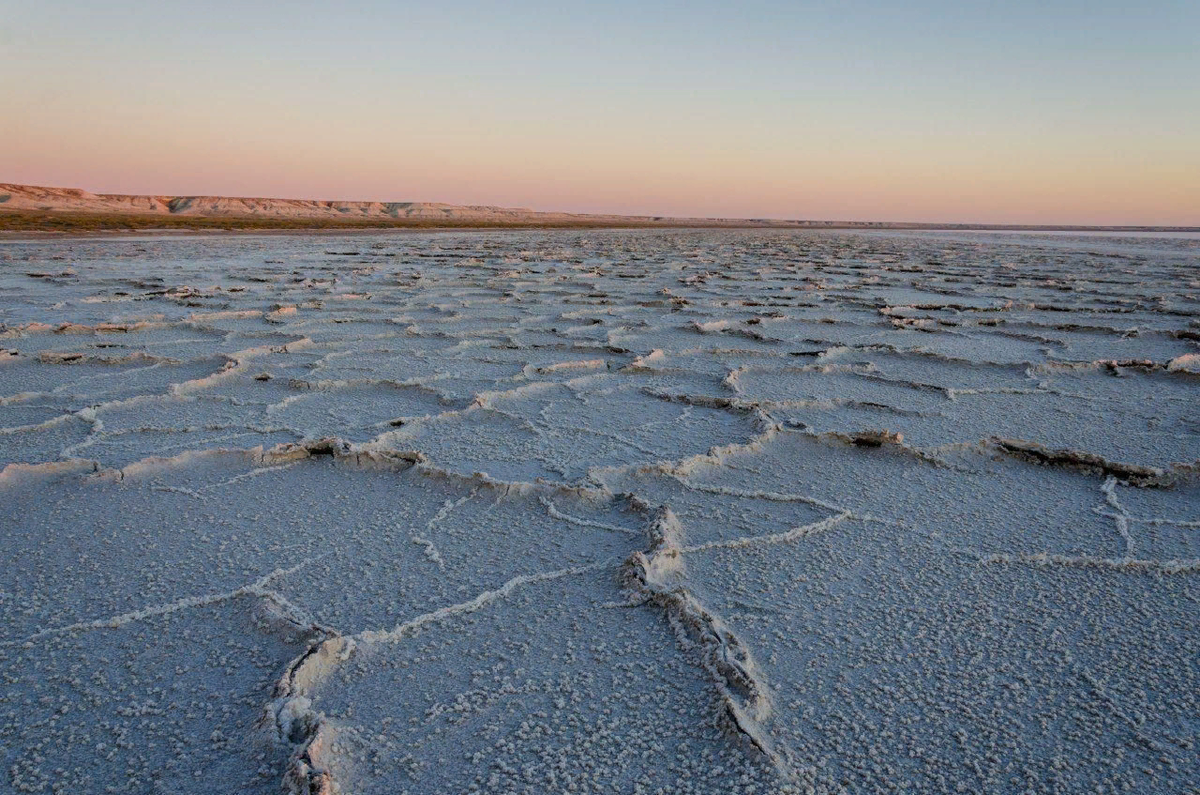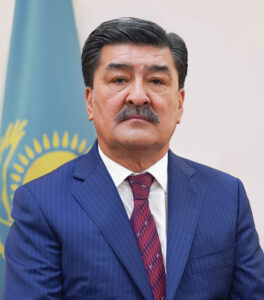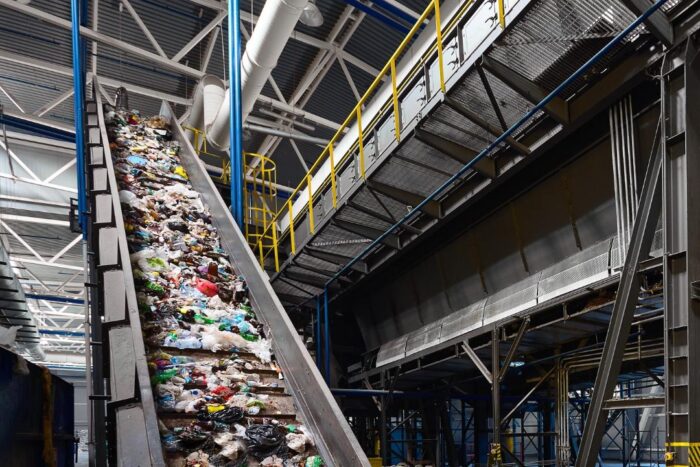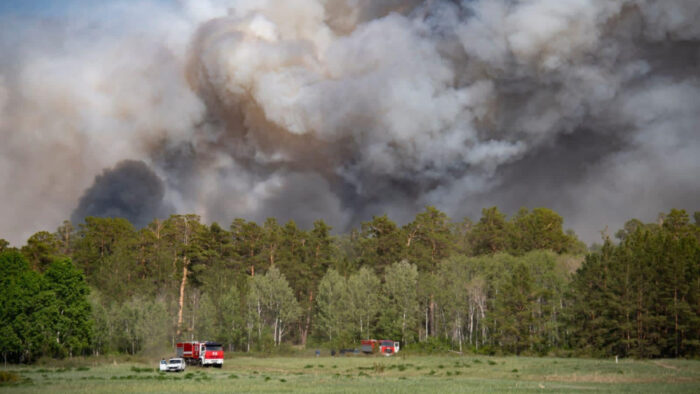ASTANA — Rapid economic development, population growth, and increased water consumption have accelerated environmental challenges in Kazakhstan, necessitating advanced solutions. What progress has been made since the new environmental code adoption in 2021? How effective have the solutions been? What issues remain unresolved? Kazakh Minister of Ecology and Natural Resources, Yerlan Nyssanbayev, discussed the environmental efforts addressing the Aral Sea crisis, wildfires, illegal deforestation, air pollution, waste management, and other pressing topics in a recent interview with Kazinform news agency.

The dried-up Aral Sea. Photo credit: kazaral.org.
Aral Sea revitalization efforts

Kazakh Minister of Ecology and Natural Resources, Yerlan Nyssanbayev. Photo credit: gov.kz
“Our Ministry monitors the quality of surface waters in the Kyzylorda Region. In particular, samples are taken in seven sites from the Syrdarya River and the Aral Sea. These studies determine 35 physical and chemical indicators of water quality. Сompared to 2022, the water quality in the Syrdarya has not changed significantly,” said Nyssanbayev.
The dried-up bottom of the Aral Sea covers approximately six million hectares, with 2.8 million hectares within the territory of Kazakhstan. To improve the ecological situation, the Ministry plans to plant 1.1 million halophytic plants, such as saxaul (haloxylon), sarsazan (genus of halophytic shrubs), and tamarisk, on a drained part of the Aral Sea by the end of 2025.
From 2021 to 2023, forest reclamation was carried out on 544,000 hectares. This year, work is underway on an area of 275,000 hectares, with plans for 280,000 hectares in 2025. Planting forests will create barriers to dust and salt storms, prevent soil erosion, increase fertility, and enhance plant diversity on the dried-up sea bottom.
“The seeds of halophytic plants sown by hand will spread naturally in the future. All this should improve the microclimate and sanitary conditions in the Aral Sea region,” Nyssanbayev added.
Waste management efforts
Nyssanbayev said that waste management is a marginal business. Enterprises rely on prices for income, thus requiring additional support measures.
The payment mechanism for waste management enterprises was relaunched on Feb.5. According to a draft decree, the remuneration rate for businesses is three percent. Approximately 200 billion tenge ($450 million) will be allocated for projects through JSC Industrial Development Fund’s loans, spanning three to 16 years.
Local executive bodies were introduced to waste management following Article 365 of the Environmental Code. An environmental education and training plan for 2023-2029, approved by the Ministry of Education, is being implemented across all levels of schooling to foster a waste management culture.

Photo credit: gov.kz
Since 2018, the Ministry of Ecology and Natural Resources and the Garysh Sapary (Space Trip) National Company have been identifying and eliminating unauthorized landfills. From 2020 to 2022, unauthorized landfills decreased from 8,884 to 5,683.
This year, as of Feb.29, 86 percent of the 6,633 identified landfills were eliminated.
In 2022, 194 officials were administratively punished for violations related to waste management, with fines exceeding 17 million tenge ($38,505). In 2023, 52 officials faced similar fines.
“At the moment, the Ministry is discussing amending the code of administrative offenses to strengthen the nation’s responsibility,” said Nyssanbayev.
The draft amendments propose an increase in administrative liability in the form of a fine from 172,500 tenge ($390) to 690,000 tenge ($1,565). In case of repeated violations, it is proposed to double the fine.
Efforts against forest fires and illegal deforestation
In 2023, 810 fires were registered on state forest fund territories, affecting 116,801 hectares and causing 163.2 billion tenge ($370 million) worth of damage.
According to Nyssanbayev, the volume of illegal logging identified during inspections conducted by state forestry and environmental institutions was 3,205 cubic meters, including 1,268 cubic meters in East Kazakhstan and 546 cubic meters in Kostanai.

A natural fire in the Abai region that was localized and involved the public in sanitary work in the Semey Ormany zone. Photo credit: Ministry of Ecology of the Republic of Kazakhstan
“Currently, the structural units are equipped for approximately 70 percent. To prevent forest fires, digital technologies such as unmanned aerial vehicles (UAVs) will be introduced,” he said.
Early detection systems were installed in the Kokshetau State National Natural Park (182,100 hectares) and the Yertis Ormany State Forest Natural Reserve (278,000 hectares). An application for funding has been submitted to install a similar system in the Semey Ormany State Forest Nature Reserve.
In Almaty, three optical sensor and thermal imaging systems were purchased on the territory of the Medeu sports complex for 250 million tenge ($566,000) to prevent and detect wildfires in hard-to-reach places.
In the North Kazakhstan Region, 11 out of 12 forestry institutions are monitored by 16 interactive video surveillance cameras.
Additionally, 71 UAVs were purchased and 80 employees of civil protection agencies were trained and certified as UAV operators.
A two-year contract was also signed to supply 12 UAVs to the Ministry of Emergency Situations’s territorial divisions.
Nyssanbayev mentioned that 68.6 billion tenge ($155,380 million) is planned for logistical support of environmental institutions as part of the comprehensive plan for 2023-2027 in civil protection.
Fines to achieve environmental compliance
In 2023, 40 administrative fines of approximately 240 million tenge ($543,600) were imposed on factories for exceeding environmental emission standards, violating requirements for protection from air pollution, and depleting water bodies.
“The main focus is on each factory’s systematic compliance with environmental requirements. If the heads of enterprises know that they will be fined for any deviation, they will, of course, try to comply with the requirements,” said Nyssanbayev.
Environmental Code
Nyssanbayev said that the Environmental Code sets target indicators measuring air, water, and soil quality, as well as waste management effectiveness.
“Local executive bodies of regions, cities of republican significance, and the capital should develop such target indicators every five years,” Nyssanbayev noted.
Before 2021, only 45 percent of funds collected from enterprises for noncompliance with environmental requirements were allocated to environmental protection. The rest were allocated to city budgets and used in areas outside the environmental sector, such as road construction.
However, after the Environmental Code’s implementation, environmental protection measures are funded by local budgets, with the amount not being less than the payments made for negative environmental impacts.
Companies implementing advanced technologies are exempt from emission payments. The funds received in the form of payments for emissions are fully utilized for environmental protection measures.
“The Environmental Code has a rule that the polluter pays and repairs. The state should focus on preventative measures rather than fines. In addition, the polluters must restore the environment to its original state,” said Nyssanbayev.
Raising ecotourism popularity
Nyssanbayev noted that the number of visitors to national nature parks is increasing. In 2022, two million visitors were registered, and in 2023, the number increased by 400,000 people.
The main focus in ecotourism development includes updating legislation on protected natural areas, laying new routes, building visitor centers, promoting environmental education, digitalization, and improving infrastructure such as roads, power lines, and pipelines.
People’s environmental contributions
“Environmental issues are always of interest to citizens. We regularly hold meetings with residents in the regions to understand their concerns. Issues raised include illegal landfills, ecology, legislative amendments, environmental projects, and landscaping,” said Nyssanbayev.
He also expressed appreciation for eco-volunteers, particularly young people, for their progressive ideas and projects.
“They make a great contribution to changing eco-consciousness, and we try to support them in every possible way,” Nyssanbayev added.


